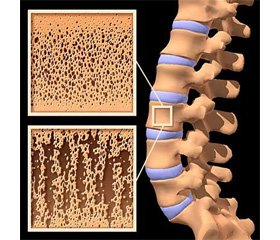Журнал «Боль. Суставы. Позвоночник» 2 (18) 2015
Вернуться к номеру
Using of Lovastatin Nanoparticles for the Osteoporosis Treatment and Fracture Risk Reduction (Experimental Study)
Авторы: Panasiuk Y., Korda M. - Ternopil State Medical University named after I.Ya. Horbachevsky, Ternopil, Ukraine
Рубрики: Ревматология, Травматология и ортопедия
Разделы: Медицинские форумы
Версия для печати
Статья опубликована на с. 93
Introduction. A new published experimental data and clinical studies demonstrate the ability of lovastatin to affect osteoregeneration. This effect of statins is realized through the increased expression of bone morphogene–tic protein 2. However, current studies on the possibility of statins to reduce the risk of fractures are controversial. The positive effect of statins on bone metabolism was observed with oral administration of these drugs but in very high doses. That is why it is so important to develop the new ways of statins delivering to fracture zones, particularly in the form of nanoparticles.
Aim. To investigate the possibility of using lovastatin in nanoparticles to restore posttraumatic bone defects in rats.
Materials and methods. White mature male rats (n = 168) were used in experiment. All animals were divided into four groups: I — intact animals, II — control group (animals with simulated bone defect), III — animals with bone defect, which were administered with lovastatin transdermally, IV — animals with bone defect treated with lovastatin incorporated into polymeric nanoparticles. The bone defect (2.0 mm in diameter) was made by dental drill in the upper third of the tibia. The III group of animals received lovastatin in doses 0.1, 1.0, 5.0 mg/kg during the whole period of experiment. The IV group of rats was injected with lovastatin incorporated into polymeric nanoparticles directly into the fracture zones in a dose 1.0 mg/kg. The animals were decapitated on the 3rd, 7th, 14th and 28th day. Biochemical (activity of alkaline and acid phosphatases, mineralization index, collagenolytic activity of plasma, oxyproline Ca and P levels in plasma), radiographic, histological, and statistical methods were used in the study.
Results. Our results showed a positive effect of transdermal sdministration of lovastatin only in dose 5 mg/kg, which is significantly higher than the average therapeutic dose. There was no effect of transdermal applying of lovastatin in dose 0.1 and 1.0 mg/kg. At the same time the using of lovastatin incorporated into polymeric nanoparticles resulted in a significant decrease of the bone resorption symptoms on the 3rd and 7th day of the experiment, which was confirmed by the biochemical markers and histological examination. Using of incorporated into polymeric nanoparticles lovastatin also resulted in the strengthening of osteoregeneration on the 14th day of experiment and resumption of posttraumatic bone defect on the 28th day.
Conclusion. In our studies we have shown that the incorporated into polymeric nanoparticles lovastatin induces posttraumatic osteoregeneration. The obtained results require further extensive research in this area.

